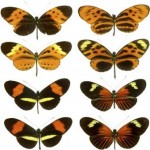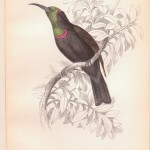Kinds Of Ants
There are over 12,000 different kinds of ants. This has led to many entomologists concluding that ants are in fact the most successful species on our planet. Over the years, they have managed to adapt to virtually all the different climates and topographies that the world has to offer. Despite most kinds of ants looking extremely similar to each other to the naked eye, the fact of the matter is that there are a number of important differences between them.
Citronella Ants
Commonly known as yellow ants due to the distinct yellow color of worker ants belonging to this species, Citronella ants enjoy invading homes. Yet, they normally refrain from causing any damage to one’s home or any food items that come their way. These kinds of ants got their name because of the fact that if crushed or in a position of danger, they tend to emit a citronella-like scent that is unique to only this species.
Odorous House Ants
If there was ever a species of ants that you would not want in your house, the odorous house ants would be it. These smelly insects release butyric acid if they feel as though their nests are being threatened. This stink is so rancid that many compare these tiny ants to skunks. Luckily, contrary to what their name suggests, these kinds of ants prefer to live outdoors and normally only enter homes if they have ready access to sweet foods inside.
Leafcutter Ants
If you think humans were the first species on earth to engage in gardening, you’re wrong. Leafcutter ants got their name because they are experts at snipping off pieces of leaves and carrying them to their nests. They use these leaves they collect as food, and to make fungus, which they also eat. Leafcutter ants build their nests underground, and they use various antibiotics to prevent the growth of harmful fungus in their homes.
Fire Ants
These kinds of ants, commonly also known as red ants, are arguably the most aggressive of all ants out there. Fire ants are not reluctant to attack anyone or anything they perceive to be a threat to their home. These ants are commonly feared because of their ability to severely sting people. Fire ants tend to build mounds in sunny, open places and they will only ever enter into homes if they sense the presence of food. Those who are allergic to wasp venom should be wary of fire ants as well.
Thief Ants
Commonly known as grease ants, these kinds of ants enjoy eating grease, fats, meats and other protein-dense foods. Thief ants might be amongst the smallest ants around, measuring a mere 2 millimeters in length, but they are by no means the friendliest. Thief ants are never reluctant to steal food from other ants in the vicinity if they see some food that interests them. Due to their tiny size, thief ants are extremely difficult to exterminate from homes. They are able to crawl into small, dark places and build long term homes there.






